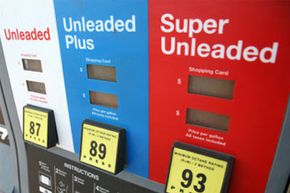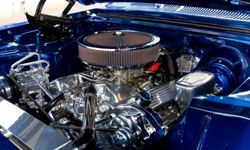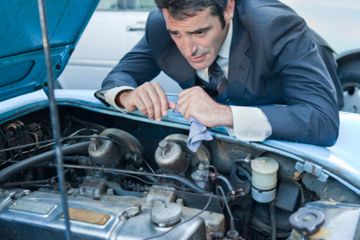For those who either never learned it or have forgotten, it's useful to know: Cars' internal combustion engines all function pretty much the same way. The vast majority of cars have four-stroke gas engines; each stroke, or compression stroke, is when a cylinder full of gas and air is compressed into a dramatically smaller volume before it is ignited with a spark plug [source: Arman].
To be more specific, a piston compresses the fuel and air mix in the combustion chamber of the engine. And the so-called compression ratio -- and each engine has its own ratio -- refers to just how much of that fuel and air combination the piston compresses. "In a four cylinder, 2-liter engine, each cylinder would have a 500 cc capacity," says John Nielsen, director of approved auto repair with the American Automobile Association (AAA). "As the piston moves down the cylinder, it draws in 500 cc of air and fuel. The valves close and the piston moves up, compressing the 500 cc charge. If that charge is compressed into 50 cc, the compression ratio of the engine would be 10:1."
Remember, under normal circumstances the compressed air and gas mix is ignited by a spark plug. But when that does not happen, and instead the mixture explodes in the combustion chamber rather than being ignited by the spark plug, that is called detonation -- or, as it is more commonly known, knocking and pinging [source: Nielsen].
To illustrate what is happening here, Nielsen says to think of a bicycle. In order to generate the most power, the optimum approach is to apply downward pressure at the top of the stroke and apply an even amount of pressure to just about the bottom of the stroke. "The same is true of a piston moving in the cylinder," he says. "When a cylinder detonates, the fuel burns at supersonic speed and releases its energy too fast, kind of like a fast stomp on the bicycle pedal."
Which brings us to the octane ratings in gasoline. Quite simply, octane ratings are a measurement of a gas's ability to resist detonation. Most gas stations offer three grades of octane, with regular rated typically at 87, mid-grade at 89 and premium at 92 or 93 [source: Federal Trade Commission]. It's easy to find what octane rating a gas has: Stations are required to post them on bright yellow stickers on each pump.
Click ahead to discover what compression ratio is and how an engine can alert you to knocking and pinging.




